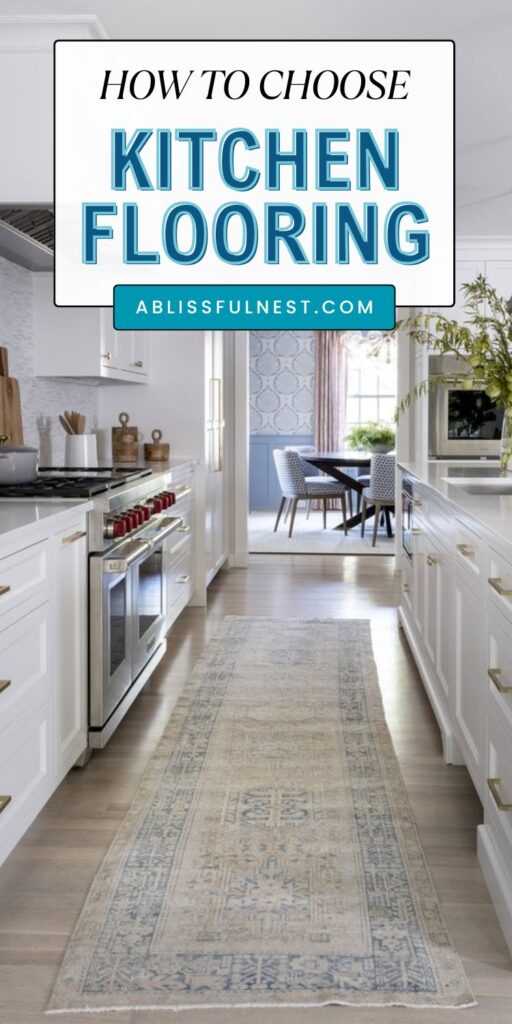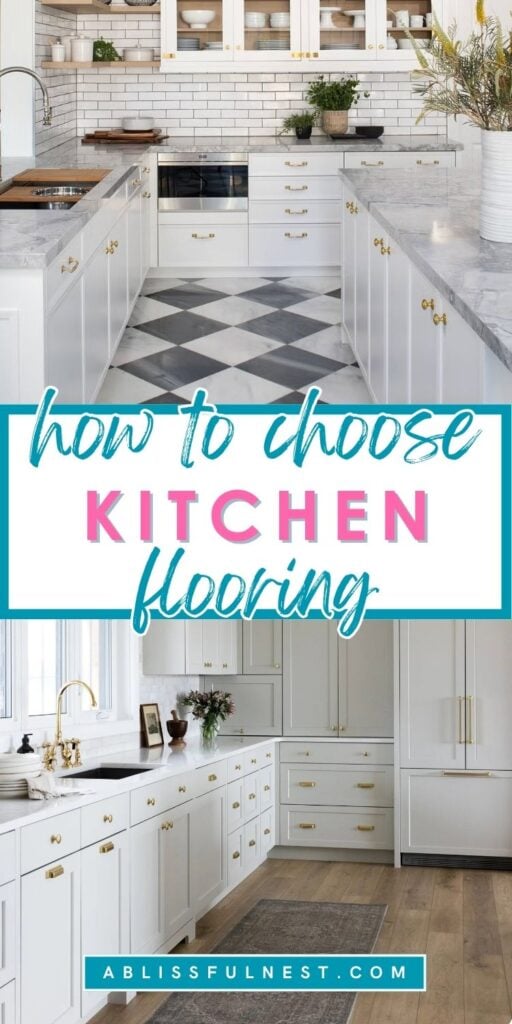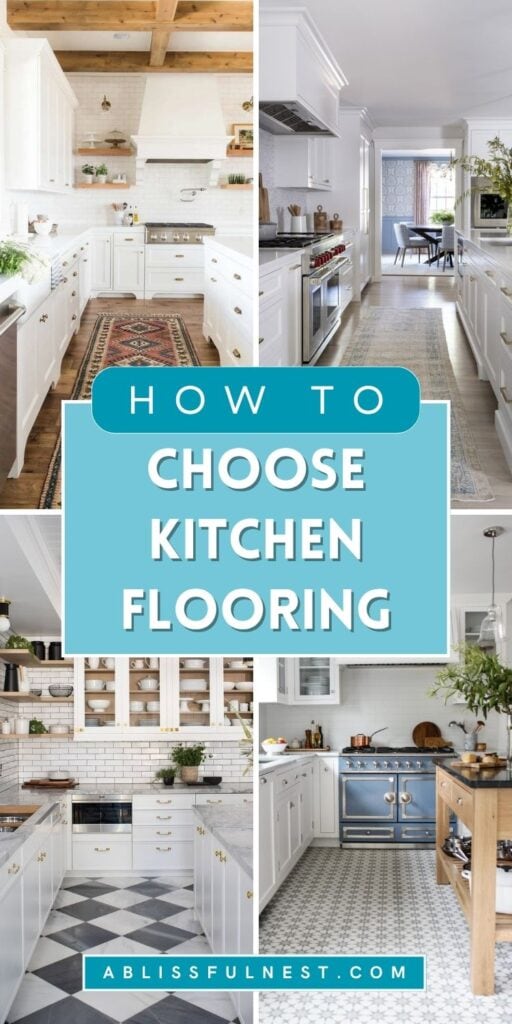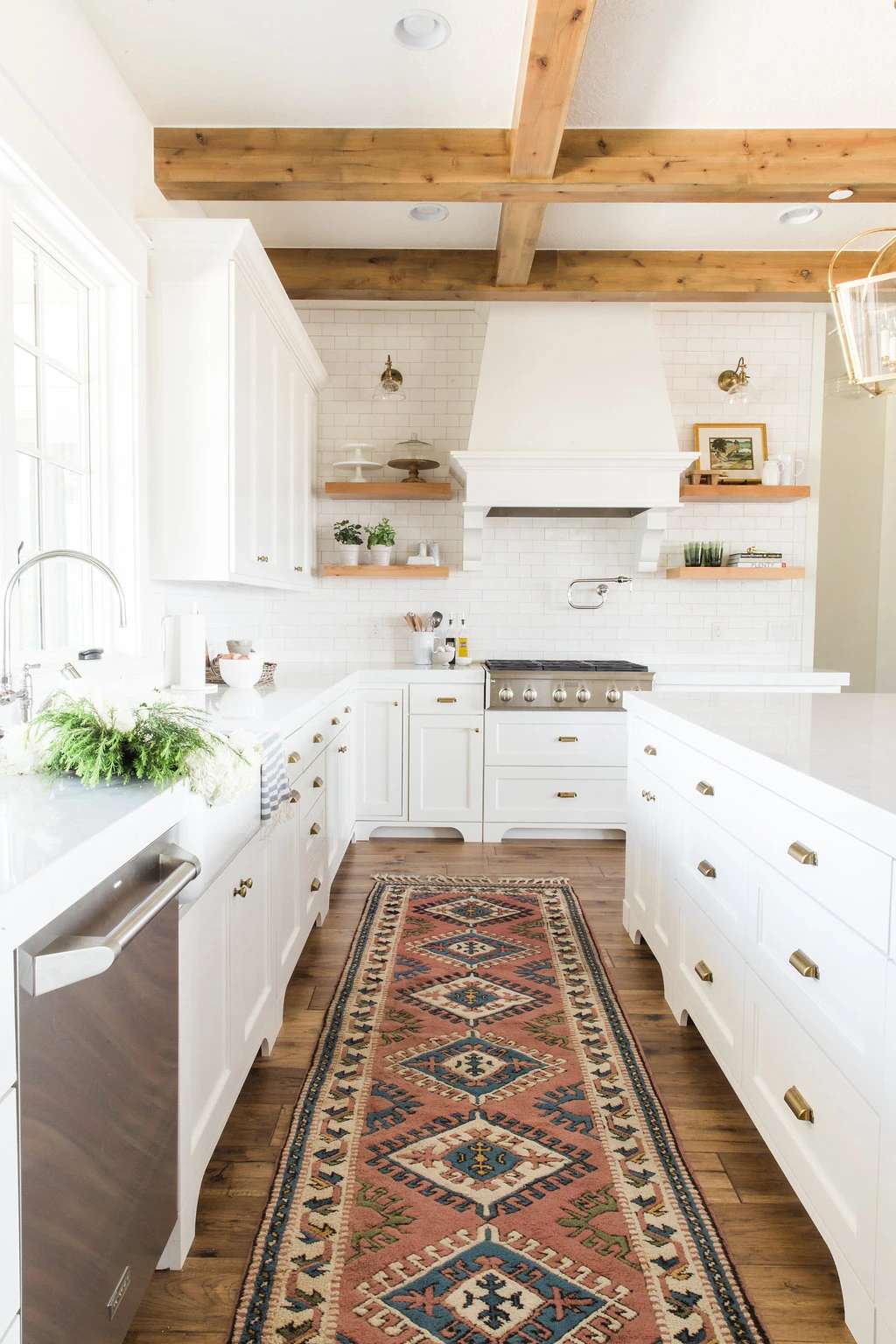Trying to figure out how to choose kitchen flooring can be stressful when nothing feels like the right mix of comfort, strength, and good looks.
You walk through showrooms or scroll online and end up more confused by all the types, textures, and color options out there.
Some floors look beautiful but scratch too easily, while others feel sturdy but don’t match your kitchen cabinets or overall style.
Even flooring that’s labeled “kitchen-safe” might feel cold, too loud, or hard on your feet after long hours of standing or cooking.
It gets frustrating when every choice comes with trade-offs and you still don’t know what works best for your space and lifestyle.
You might also worry about spills, dropped pans, kids running around, or pets tracking in dirt and water every day.
No one wants to waste money installing something that cracks, stains, or looks worn after just a few months.
This post may contain affiliate links. As an Amazon Associate and a participant in other affiliate programs, I earn a commission on qualifying purchases at no additional cost to you.
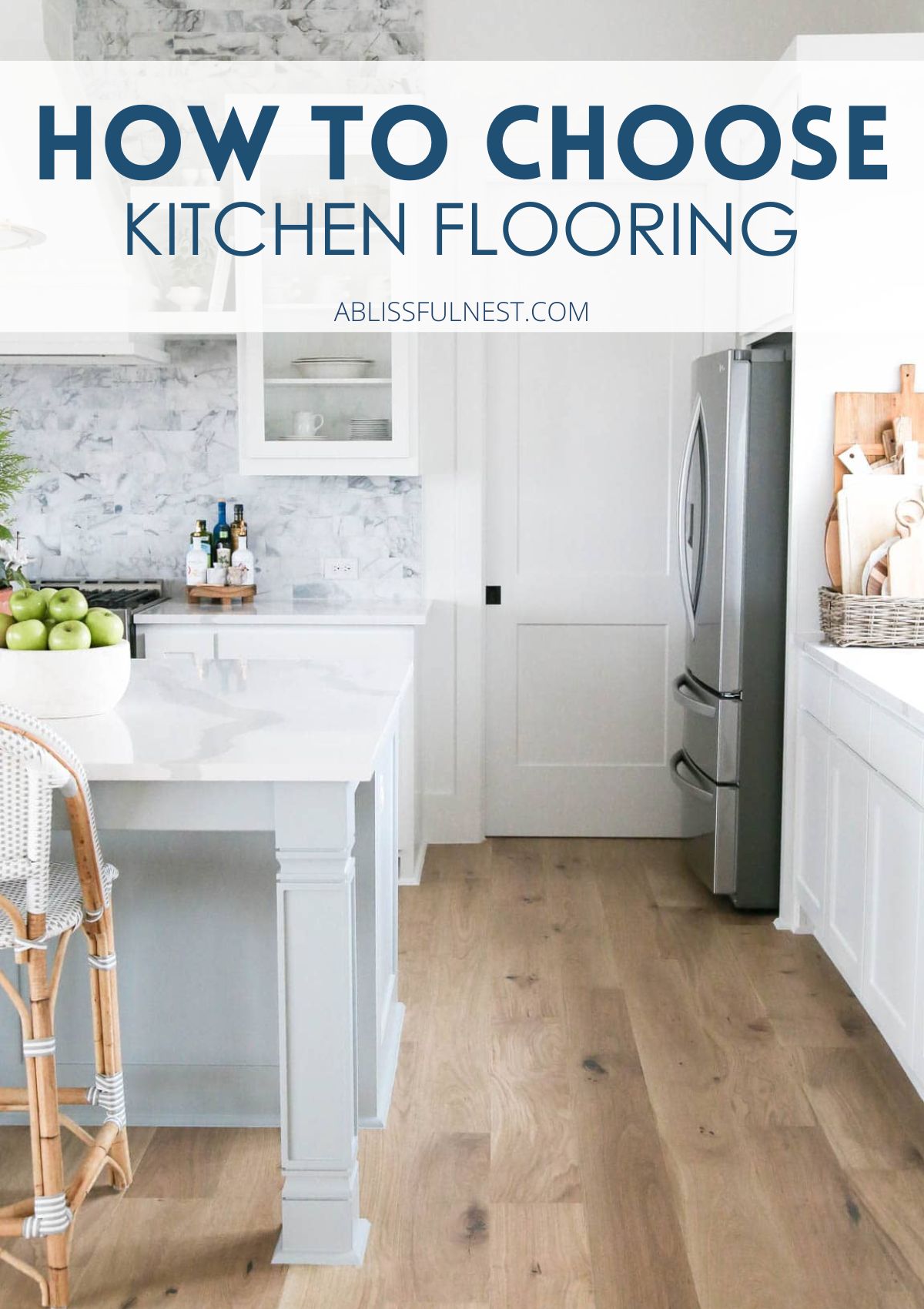
With so many options, it’s easy to feel stuck between cost, looks, and how much upkeep each material needs.
But once you know what to look for, choosing kitchen flooring becomes easier and even a little fun to figure out.
So, let me help you find the right match to pull your kitchen together and make the whole room feel fresh, warm, and built to last.
Why Kitchen Flooring Matters More Than You Think
Your kitchen floor handles more traffic than any other part of your home, and it needs to work hard while still looking good.
Whether you’re cooking, cleaning, or helping with homework, your floor takes spills, heat, and heavy foot traffic every single day.
Choosing the wrong material can make your kitchen feel colder, noisier, or more stressful than it needs to be.
The right flooring keeps the space comfortable, easy to clean, and strong enough to handle years of use without needing constant repairs.
It also helps tie together your countertops, kitchen cabinet color ideas, and appliances to create a balanced, well-designed space that feels complete.
A kitchen with the wrong flooring might look nice at first, but quickly show wear, stains, or damage that costs money to fix.
Even small details like texture and finish can affect how easy the floor is to clean or how safe it feels underfoot.
Good kitchen flooring can raise your home’s value and make it more appealing to future buyers or renters down the line.
It’s not just about looks because flooring plays a big part in how you move, work, and live in your kitchen every day.
Once you understand what flooring offers, you’ll see why it deserves just as much attention as any other design choice.
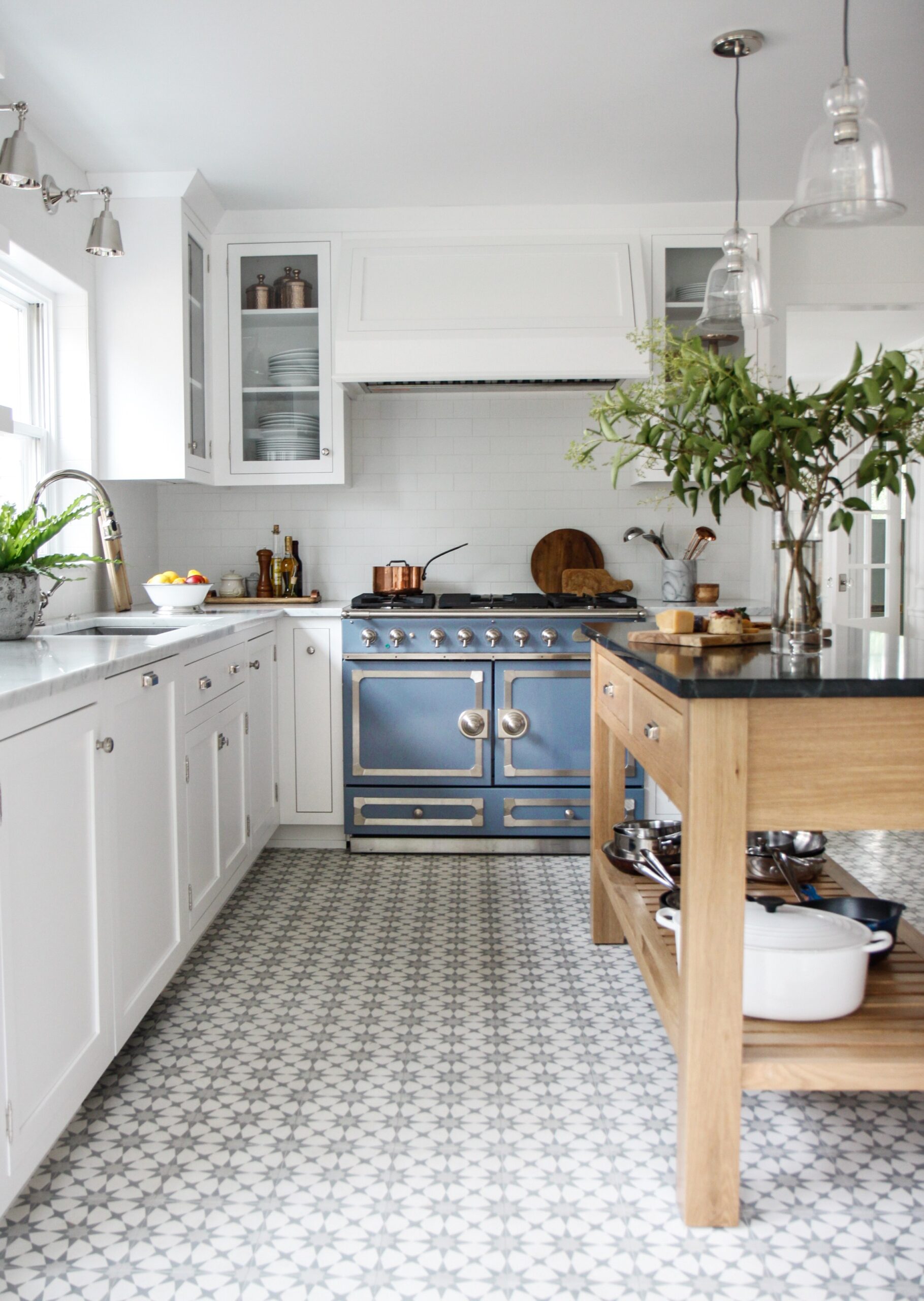
What To Consider Before Choosing Kitchen Flooring
Before picking your kitchen floor, think about how you use the space every day and what matters most in terms of comfort and care.
If you cook often, you’ll need something soft enough to stand on but still strong enough to take spills, heat, and dropped utensils.
Homes with kids or pets need flooring that resists scratches, cleans easily, and won’t get ruined by muddy feet or sudden messes.
Make sure the surface isn’t too slippery when wet or too textured to clean without scrubbing for hours.
Think about how much light your kitchen gets, since dark floors can make a space feel small while lighter ones show every crumb.
You’ll also want something that fits your budget, especially once you add labor, trim, and other extra costs into the full project.
Some flooring needs more upkeep than others, so be honest about how much time you’re willing to spend cleaning or sealing.
Consider how your flooring will connect with nearby rooms, especially if you have an open floor plan that blends into a dining or family friendly living room space.
Don’t forget sound because hard floors echo more, which might matter in busy homes with lots of people moving around.
The right choice balances strength, looks, budget, and comfort so your kitchen stays clean, quiet, and inviting year-round.
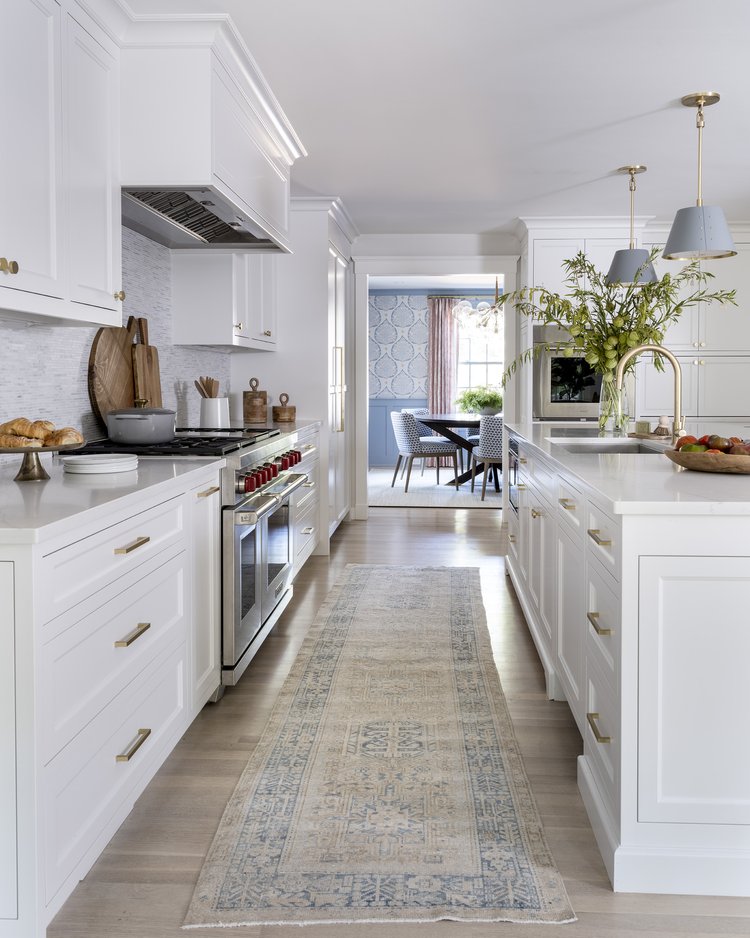
What To Have On Hand To Maintain Kitchen Flooring
Keeping your kitchen floors clean and looking fresh is easier when you’ve got the right tools close by for everyday messes and deep cleaning.
Some floor types need more care than others, but a few simple items can help you avoid stains, scratches, or wear.
Here are some essentials you need to have on hand to protect your flooring and keep grit from grinding into the surface over time.
Tap Photos To Shop
Would you like to save this post?
Best Flooring Materials For Kitchens (Pros and Cons)
There are plenty of flooring materials to choose from, each with its own benefits and downsides depending on your lifestyle and kitchen setup.
Luxury vinyl plank (LVP) flooring is waterproof and affordable, which makes it great for families who cook often or have kids running around.
LVP comes in wood look or stone look options that elevate your kitchen and offer inspiration for how to style a kitchen without the cost or maintenance of real materials.
It is easy to install and care for, though it can tear or dent if heavy furniture or sharp tools are dragged across the surface.
Tile flooring handles heat, water, and foot traffic with ease, making it one of the most durable choices for kitchens of all sizes.
It is available in many colors, patterns, and finishes, which helps you match it with your cabinets, counters, or backsplash design.
On the downside, tile feels cold underfoot and can be hard on your knees and back if you spend long hours standing and cooking.
Laminate flooring offers a wood or stone appearance at a much lower cost, which is perfect for quick makeovers or short-term flooring updates.
It installs easily with a floating method and works well in kitchens with low moisture and light use.
However, laminate is prone to warping when exposed to water and may wear down faster in high-traffic or busy family kitchens.
Hardwood flooring brings natural warmth, timeless beauty, and character to the kitchen, especially in open-concept homes where design flow matters.
It can be refinished over time and adds value to your home, but it does require sealing to resist spills, dents, and daily wear.
Wood floors also scratch more easily and do not respond well to long-term moisture or high humidity in the kitchen environment.
Engineered wood flooring gives you the rich look of hardwood with extra strength thanks to its layered core construction and stable top layer.
It handles moisture and temperature changes better than solid wood, making it safer for busy kitchens.
Even so, it still costs more than laminate or vinyl and may not last as long as traditional hardwood with repeated refinishing.
Concrete flooring is strong, easy to maintain, and works well in modern farmhouse kitchens with a durable surface for heavy appliances and everyday use.
It can be polished or stained for a sleek custom look, and it withstands foot traffic, spills, and pets.
Without rugs or mats, standing in the kitchen for long periods while cooking or cleaning may feel cold underfoot and uncomfortable.
No matter the material, always think about how it looks, feels, and functions in a space where comfort and cleanup matter every day.
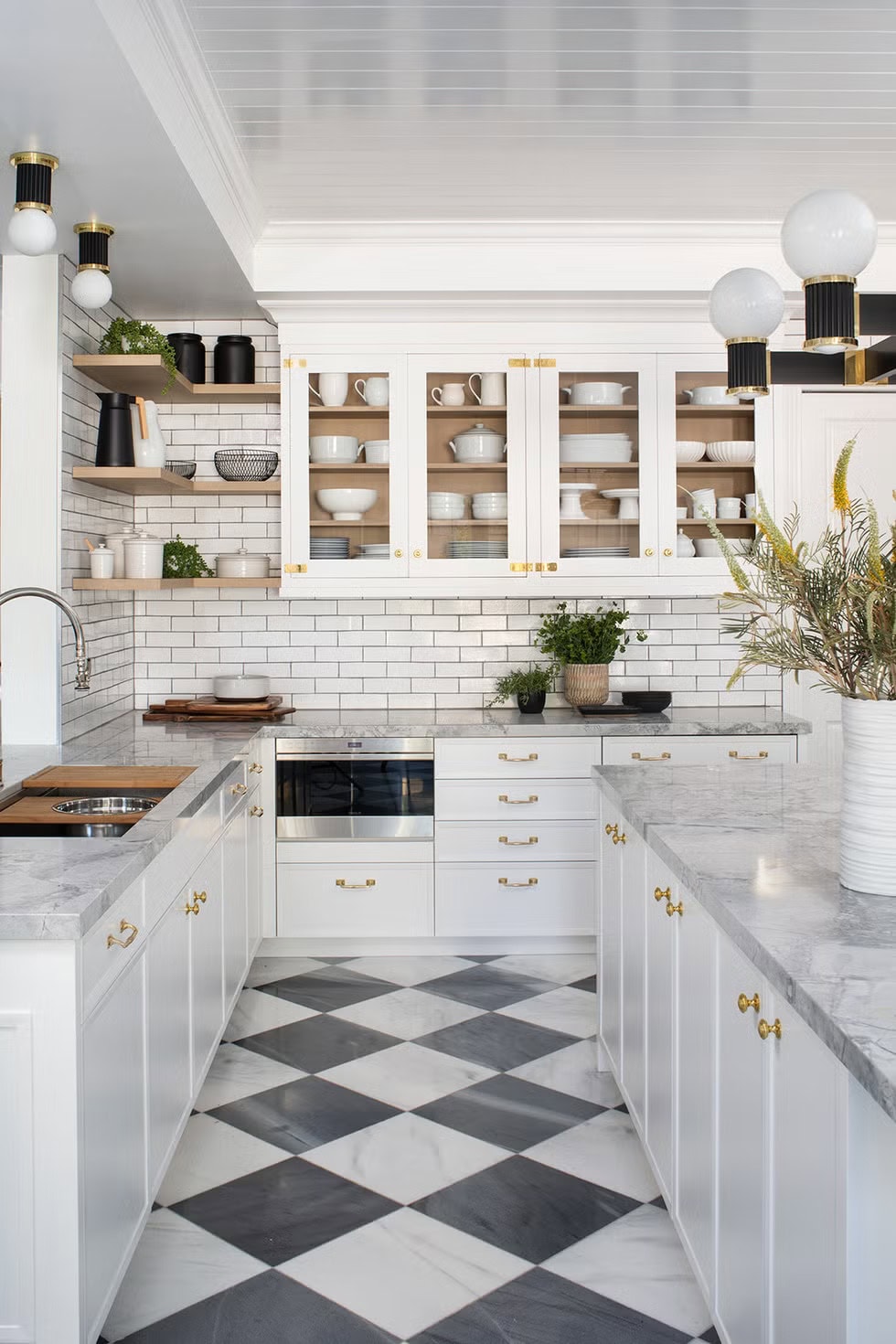
How To Match Kitchen Flooring With Cabinets And Countertops
When matching flooring with cabinets and countertops, start by choosing what feature you want to stand out most in the room.
If your kitchen cabinet color ideas lean bold or dark, a lighter floor can help balance things out and keep the room from feeling too heavy or dark.
Light-colored floors go well with dark countertops, while mid-tones can blend both elements without one overpowering the other.
Warm wood tones pair well with natural flooring materials like tile, cork, or vinyl that mimic stone or light oak.
Avoid using all the same shade throughout the kitchen, since that can make the room feel flat or too matchy.
Choose textures that complement each other so nothing feels out of place… smooth countertops go best with a lightly textured floor.
Keep undertones in mind, matching cool grays with cool tones and warm beiges with warmer flooring to keep everything looking tied together.
If your kitchen already has a lot of patterns or colors, go with neutral floors that won’t compete with your existing features.
Bring home samples and look at them in natural light to make sure they work together before you make any big decisions.
A well-matched floor helps tie all your finishes together and creates a kitchen that feels stylish, polished, and thoughtfully done.
Frequently Asked Questions
Tile and luxury vinyl are the most durable options because they resist heat, water, and wear while still being easy to clean and care for. These materials hold up well under heavy use and are great choices for families or people who cook often and entertain frequently.
Vinyl or laminate are great picks since they’re scratch-resistant, simple to clean, and comfortable enough for active feet and paws. They also hold up well to spills, dropped food, and the messes that often come with everyday family life.
Yes, but it needs regular sealing and careful cleaning since moisture can damage the wood over time if not handled quickly. It works best in kitchens with good ventilation and where spills can be cleaned right away.
Tile, vinyl, and laminate are all easy to maintain with simple sweeping, mopping, and occasional deep cleaning using mild, floor-safe products. They’re great for busy homes where you need something that looks good and stays clean without constant effort.
It doesn’t have to match exactly, but it should flow well, especially if your layout is open and rooms connect without clear breaks. Using similar tones or materials keeps the whole space feeling connected and makes your home look more unified and spacious.
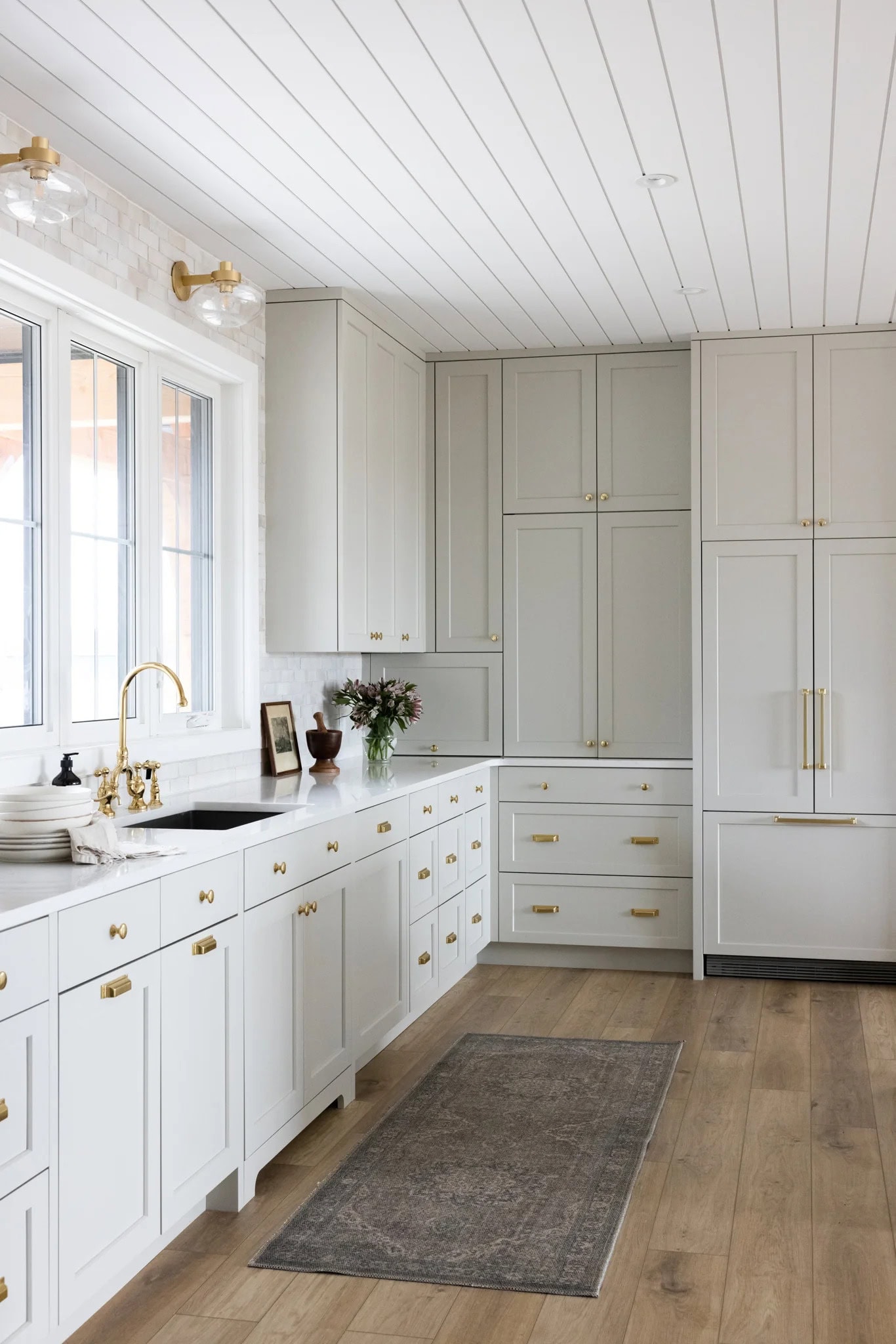
Picking the right floor can feel overwhelming when every choice seems too costly, too fragile, or too difficult to keep clean long-term.
Knowing how to choose kitchen flooring gives you the confidence to make a smart choice that fits your space, lifestyle, and budget.
It’s not about trends but finding a floor supporting your everyday needs while still looking great over time.
Whether you need something soft, waterproof, or easy to clean, there’s a material that can handle your home’s unique demands.
Once you get it right, your kitchen becomes more than just a cooking place. It becomes a place you truly enjoy spending time in!


